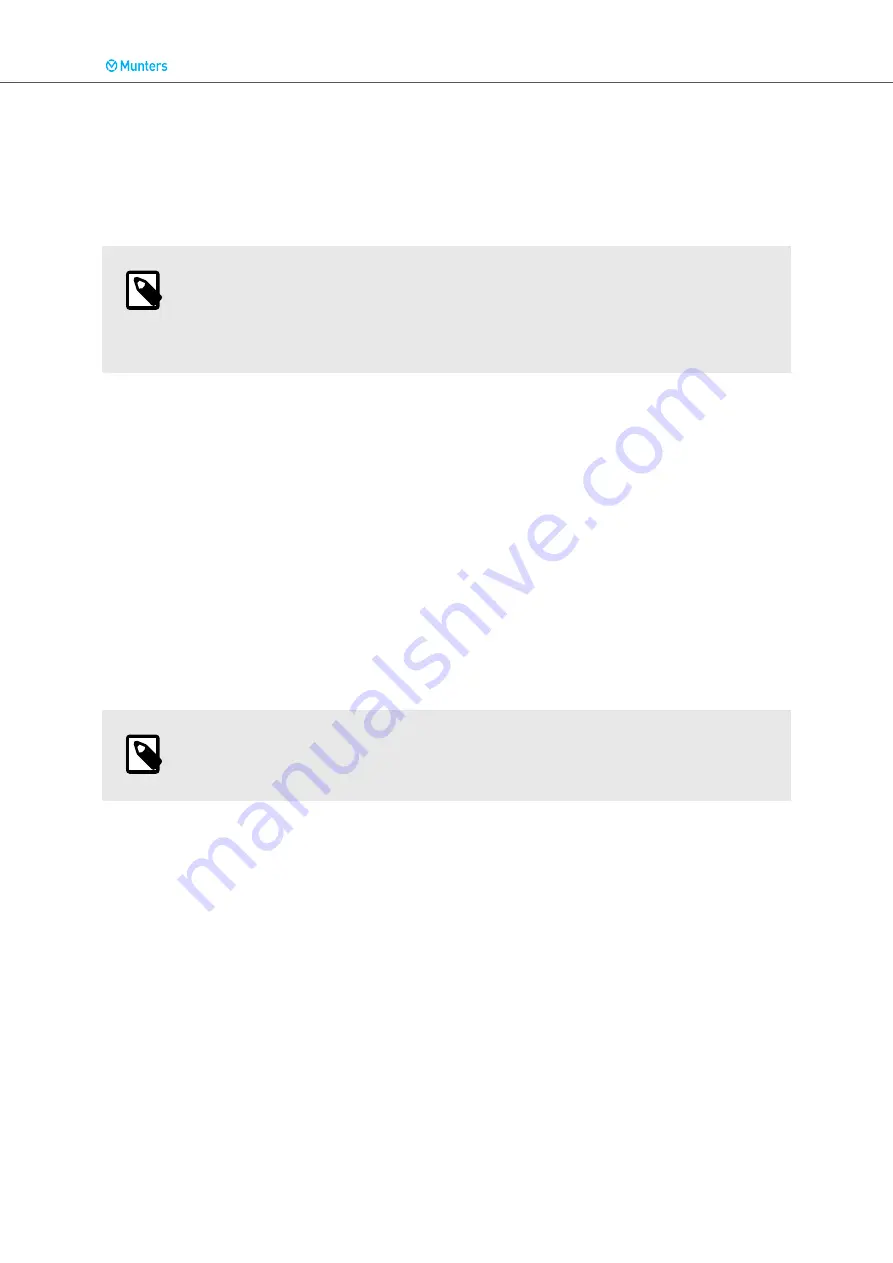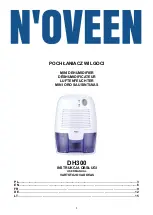
5.4. Site requirements
The dehumidifier is only intended for indoor installation.
Avoid installing the dehumidifier in a damp environment where there is a risk of water entering the unit
or in a very dusty environment. If in doubt, contact Munters.
NOTE
It is important that the intended installation site meets the location and space require-
ments for the equipment in order to achieve the best possible performance and trou-
ble-free operation.
For space requirements, see section
Dimensions and service space
.
If the dehumidifier is to be placed on the wall we recommend the specially designed wall bracket.
Always leave minimum 10 cm space between the unit and the wall.
5.5. Ducts and hoses
When installing ductwork between the dehumidifier and the inlet and outlet connections, the following
recommendations should be observed:
• Duct length must be kept as short as possible to minimize static pressure loss.
• All duct and hose connections must be air tight and vapour tight to ensure full performance.
• The ducting must always be insulated when there is a risk of freezing.
• The total resistance in the ductwork must not exceed the performance rating of the dehumidifier fans.
NOTE
Maximum length of dry air hose is 25 m.
5.5.1. Ductwork for outdoor air inlet
When bringing outside ambient air into the dehumidifier, the opening to the inlet duct should be located
sufficiently high above ground level to prevent the pick up of dust and debris. The ducting should be
designed to prevent rain and snow from being drawn into the dehumidifier. The air inlet must be located
away from possible contaminants such as engine exhaust gases, steam and harmful vapours.
To prevent the wet air from humidifying the process/reactivation air, the air inlet for process/reactivation
must be located at least 2 m from the wet air outlet.
Fasten wire netting with a mesh width of approximately 10 mm in the outer end of the duct.
5.5.2. Ductwork for wet air outlet
Wet air ducting must be in corrosion resistant material, and must be capable of withstanding tempera-
tures up to 80 °C.
The wet air ducting must always be insulated if there is a risk of freezing. The wet air leaving the dehu-
midifier will easily cause condensation on the inside of the duct walls due to the high moisture content.
ComDry M210X Dehumidifier
13














































